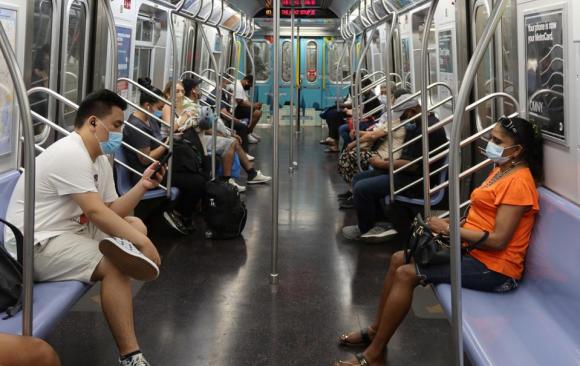


The financially troubled MTA is warning customers that massive service cuts and layoffs are coming if the federal government doesn’t cough up more money.
The Metropolitan Transportation Authority said last week it will be forced to slash 40% of subway and bus services in New York City unless it secures $12 billion in federal aid.
For riders, that would mean an increase in wait times of eight minutes for the subway and 15 minutes for buses, while fares would continue to rise and much-needed signal upgrades would be put on hold. The renewed call for assistance comes as the troubled transit system, reeling from the effects of the pandemic, faces a $16.2 billion deficit through until 2024.
Along with massive service and workforce cuts, elevator installations and on-demand paratransit is on the MTA’s chopping block if federal funding doesn’t come through.
MTA Chairman Pat Foye says subway and bus ridership have plummeted during the coronavirus pandemic and this is even more severe than the Great Depression. “The federal government must deliver for the MTA," he said. "It is literally our only option for survival.” Foye says the agency needs $12 billion in the next few months or there will be more fare and toll hikes and a 40% reduction in subway and bus service.
State Senator Diane Savino (D) from Staten Island, testified during a recent hearing. “The consequences of not receiving additional funding mean extending hardship for years to come in our city," she said. "We cannot afford to lay off workers. We cannot afford to decrease services.”
The MTA already secured $3.9 billion in federal aid in March, but those funds were exhausted by July. During the MTA’s monthly board meeting last Wednesday, agency officials laid out a “doomsday plan” if a federal rescue package does not materialize.
The doomsday plan spells disaster for all riders and commuters in the New York City:
U.S. Census Bureau data has determined that about 55% of households in New York City are vehicle free. Cars.com reports that walk-ins at car dealerships in the metro area had gone up by 38% since the start of the pandemic.
“The only chance of New York City’s economy coming back is a vibrant subway, and people aren’t going to get on the subway if the commutes are that bad,” said John Samuelsen, president of the Transport Workers Union International.
Last month, MTA board members suggested raising a gas tax on car commuters to help fund transportation projects and to reduce the reliance of the MTA, and the millions of daily commuters it serves, on federal funding.
The salvation of mass transit in New York City could hinge on how quickly riders return to trains and buses as they have on a relative scale since NYC entered Phase I of reopening in June. Since then, the MTA has clocked about 2 million riders return to buses and about half of that on buses where they were not charging fares. On August 31, front-door boarding and fare collection resumes on local buses.